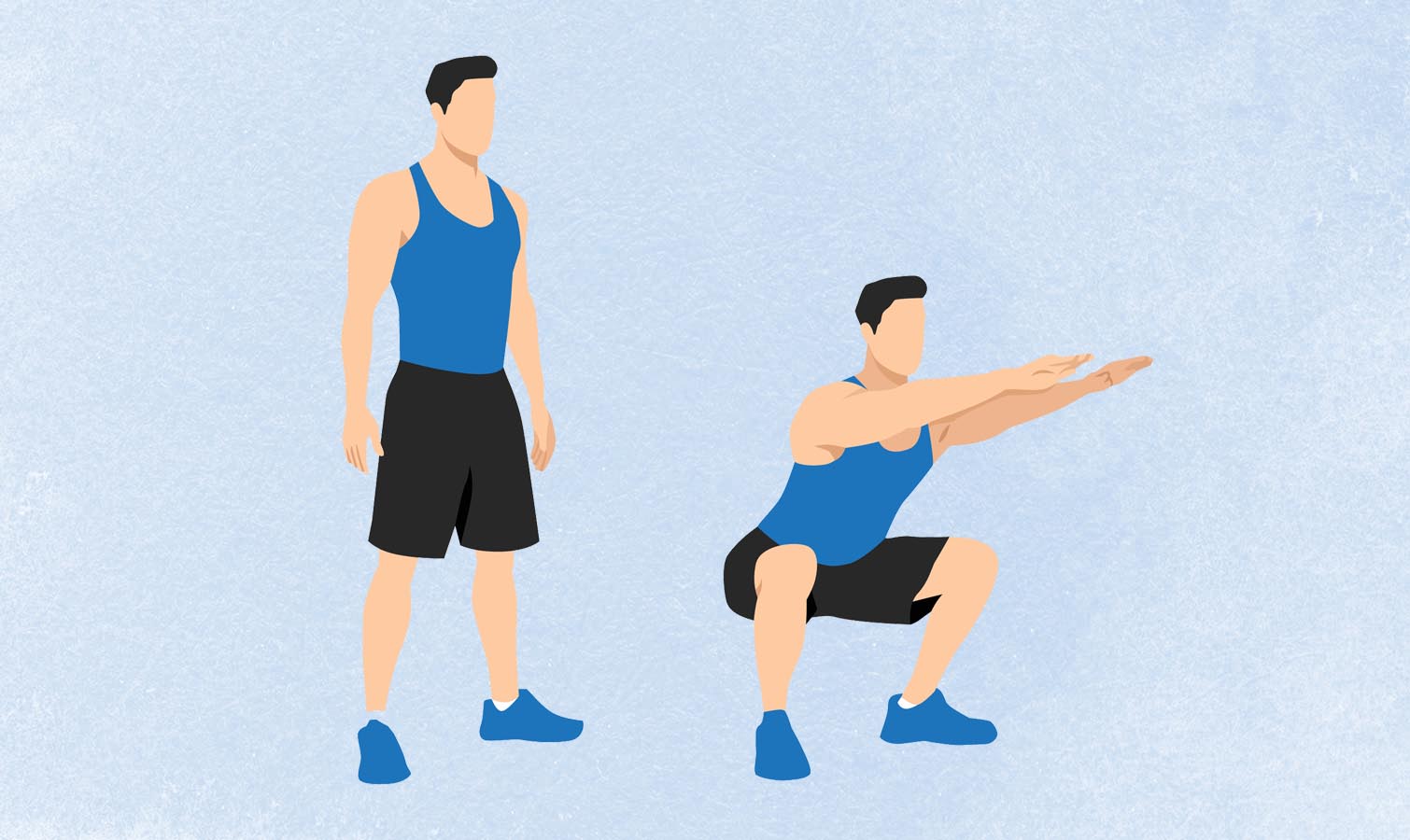I held a 3-minute low squat every day for a week — here’s what happened
Here's a different kind of squat challenge to try

If I asked you to think of a lower body exercise, I’d place bets on the fact that a squat would be one of the first exercises you thought of. But to really up the ante and make squats work even harder, dropping into a squat and holding there is a surefire way to make your legs burn. Holding a low squat isn’t easy, and holding a low squat for three minutes is a real challenge, as I found out when I added it to my workout routine every day for a week, just for fun. Read on to find out what happened
The benefits of holding a squat
A squat is great at working the muscles in the lower body, particularly the quads, hamstrings, and glutes. The glutes work especially hard if you focus on pushing through your heels as you rise from a squat. Don’t just take my word for it — research has stated that squats can help build muscle in the lower body.
As well as working the lower body, squats work the core muscles too, as your ab muscles have to engage to keep your torso upright as you sink into the exercise.
Holding a low squat increases the time spent under tension (TUT), wherein muscles are kept under tension for longer, making them work harder. As I’ve mentioned in previous challenges, it is time under tension that elicits muscle growth — keeping muscles under resistance challenges them in ways normal bodyweight squats don’t. In the case of holding a squat, it’s normal for your leg muscles to shake — in fact, this is a sign they may not be used to working against resistance for such an amount of time.
Resistance-based training has been shown to also help boost bone strength, which is vital as we age — studies have also found that squats help to improve bone mineral density.
How to do a squat hold
Ready to get started? Here’s how to do a squat hold with perfect form:

- Stand upright with feet hip-width apart.
- Bend the knees and push your hips back as you lower down, maintaining a flat back as you do so and keeping your gaze forward.
- When your thighs are parallel to the ground, pause, then drive up through the heels and come back up to standing.
- When holding a low squat, rather than pushing up and coming up to standing, you simply stay down, with your feet firmly flat on the floor, keeping your gaze forward and engaging your back and core so that you don’t start bending over.
Of course, this can all be made harder by adding some resistance, perhaps in the form of one of the best adjustable dumbbells held in both hands or two dumbbells, one held on each shoulder.
Sign up to get the BEST of Tom's Guide direct to your inbox.
Get instant access to breaking news, the hottest reviews, great deals and helpful tips.
I opted to hold my low squat for three minutes, but you can simplify the move by reducing this time, or make it harder by extending it.
I held a 3-minute low squat every day for a week — here’s what happened
Three minutes goes pretty quick
You might think that three minutes would take an age to go by when holding a low squat, but from my experience, it flew by. The first minute was a doddle, the next 30 seconds started to feel fiery, and then the remaining time was spent moving a little more, as I kept pausing to shake my legs out. By the end of the week, I decided to challenge myself by adding a minute each day and found I was able to hold a low squat for five minutes, albeit with a lot of shaking.
My quads!
Oh my quad! If there’s one muscle that felt it was burning up more than any other, it was my quads. I have fairly strong quads, thanks to years of exercise, weights, and running, but this simple bodyweight exercise left them crying out in pain.
This week-long challenge reminded me that time under tension never gets easier. That said, by the end of my week, I’m fairly certain that my quads could handle the low squat a lot more than at the start.
I added some pulses for a glute burn
Although it was my quads that burned the most during this challenge, my glutes did also kick in after a couple of minutes. To really feel my glutes working double time, I added some small pulses. As someone who places a heavy focus on maintaining strong glutes, I felt the need to make sure this lower body challenge gave my glutes a good workout too. As the biggest muscle in the body, strong glutes are so important for everyday movements but are especially important for me as a marathon runner.
My form did suffer
When doing a normal, up-and-down squat, it’s important to maintain a flat back and forward gaze. Why? It’s mostly to prevent muscle pain and potential injury, especially if there’s extra weight involved in the form of dumbbells or barbells. While holding my low squat, I did feel my back start to arch — this exercise required me to touch base with my body at regular intervals, to re-engage with my back and core, realign my hips, and keep my gaze forward.
As always, if you’re not sure about your form when practicing an exercise for the first time, it’s always a good idea to check with a personal trainer.
I took regular breaks
After one minute of holding my squat, the burn intensified. After 90 seconds, I had to stand and shake before dropping back down into my squat. After this, I took another two quick breaks before the three minutes were up. So, you could say I cheated a little. Needless to say, by the end of the week, my break count was lower as my legs became a little more accustomed to the low squat hold.
I held a 3-minute low squat every day for a week — here’s my verdict
Should you take on this challenge? 100% yes! Putting your lower body muscles under tension helps them to get stronger, which is useful for general day-to-day movement as well as for other sports and exercise. Plus, as I mentioned, any type of weight-bearing exercise, such as a squat, is great for helping to maintain strong bones.
Although holding a low squat might sound incredibly dull, time does fly as you battle the voice in your head that is telling you to give up and stand up.
If you struggle holding a low squat for three minutes, start with two minutes, and work your way up. To make this even harder, try throwing it in as a finisher to your next leg day workout, or add weights if you dare.
More from Tom's Guide
Lucy is a freelance health and fitness journalist as well as a pre and post-natal personal trainer. Although a sweaty gym session (skipping rope is a must) is her favorite way to ‘relax’, she’s also a fan of bingeing on The Office, snacking on chocolate-coated raisins, and fizz-filled brunches with friends.

